Text
❤️
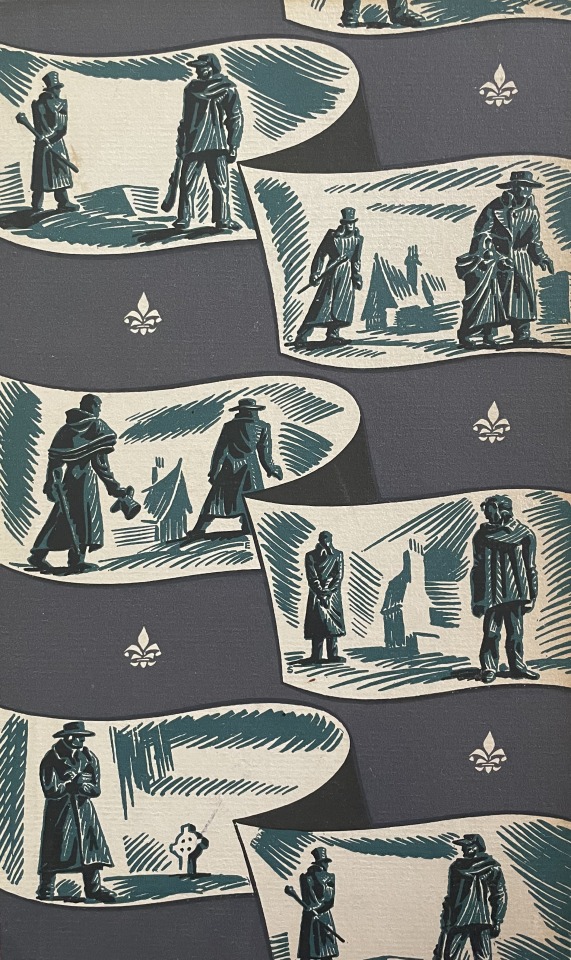
Les Misérables cover art - Lascelles Wraxall translation - Art by Lynd Ward
#les mis#les miserables#victor hugo#lascelles wraxall#wraxall translation#lynd ward#jean valjean#javert#inspector javert#javert illustrations#valjean illustrations
201 notes
·
View notes
Text


Quasting: Philip Quast as Dr Rod Hawkins in Young Doctors (1983)
I used to watch this but don't remember PQ being in it.
0 notes
Text
Ok It's Pick a Jav time
Check out the 6 Javert pics below and then chose one from the poll options
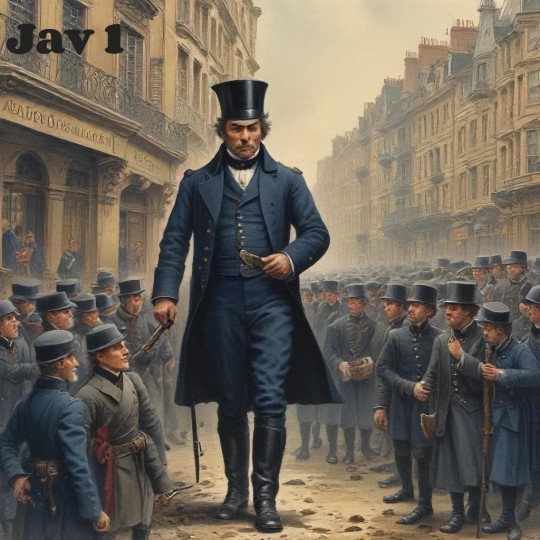





#pick a javert time#poll#help me choose my fanfic javert#javert#inspector javert#les miserables#les mis#help me solve my crisis
0 notes
Text

Well Quastvert won this poll. I'm still in a quadry over my fanfic Javert though
#poll#which version of javert do you picture when writing your javert fanfics#quastvert wins#I'm still having a crisis over my fanfic javert#he is still giving me hugh jackman's valjean vibes
2 notes
·
View notes
Text
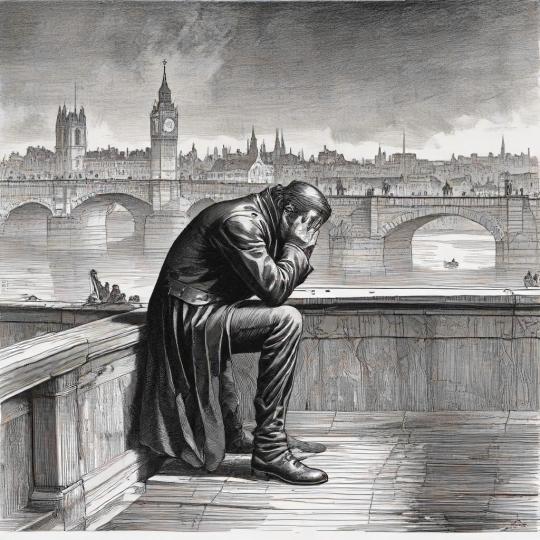
Oh Javert
This pic gives me so many feelings
AI Generated Javert Pic
#les mis#les miserables#javert#inspector javert#ai generated javert image#this one give me so many feelings
3 notes
·
View notes
Text


Still no comments yet but I’ve now got 2 kudos.
I got excited just now when I got my second kudos 🤗🤗
Does anyone else get excited or is it just me?
#les mis#les miserables#les mis fanfiction#my first fanfic#javert: out of the shadows#ao3 kudos#kudos#excited by kudos on ao3#javert fanfic#javert fanfiction
6 notes
·
View notes
Text
Just so you guys know what kind of funky fuckery is going on in my head.
Quastvert was the first Javert I ever saw and I will always worship and adore him.
However 😳😳😳
I’m starting to also fall in love with this dodgy looking lurker.
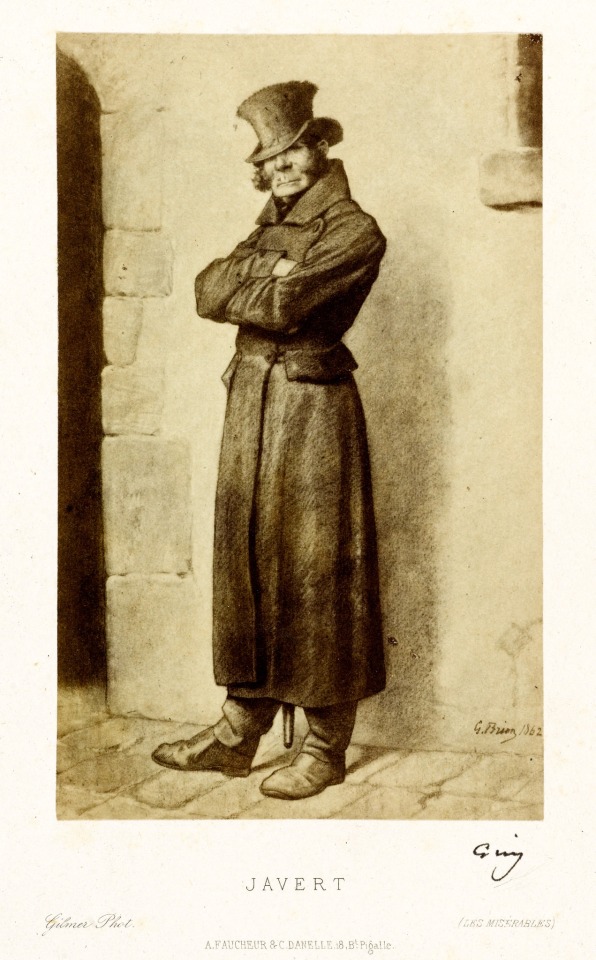
Recent and surprising developments in my dreams mean that my mind is now equally as occupied by ☝🏻☝🏻 as it is by 👇🏼👇🏼

I love both of them and feel like it’s wrong. What’s wrong with me?
#in love with 2 Javert’s#quastvert#illustration javert#wtf is wrong with me#the funky fuckery in my mind#les mis#les miserables#philip quast
0 notes
Text
Serious Question Peeps
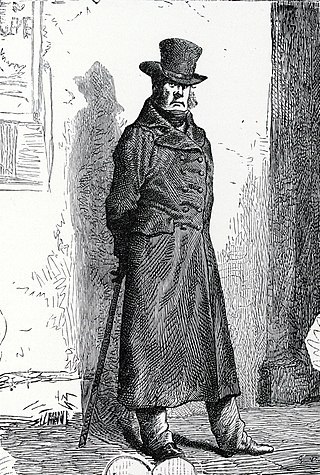
I ask this because I'm having something of a post ai pic generating crisis. I can't make my mind up whether or not I like the aI version of Javert I have chosen. I'm considering choosing another one. I need some help with directing me towards a decision. The Javert I am currently using is giving me Hugh Jackman Valjean vibes and it's bugging me (see image below).

#which version of javert do you picture when writing your javert fanfics#javert#inspector javert#not happy with the ai javert I'm currently using#he reminds me a little of Hugh Jackmans Valjean#Help me decide which direction to go with me decision#I don't know why I'm like this
1 note
·
View note
Text

Captions please??
0 notes
Text
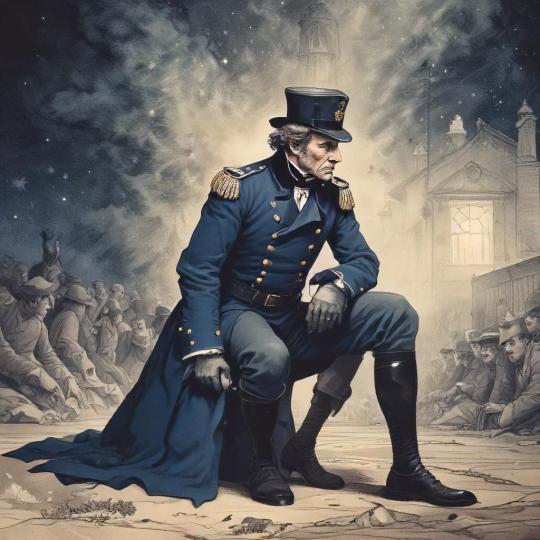


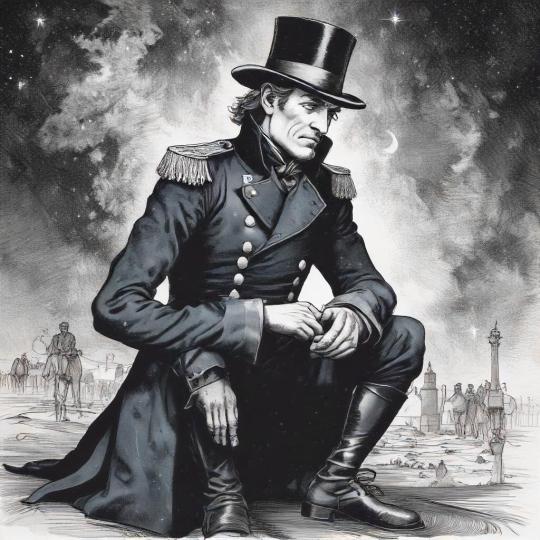


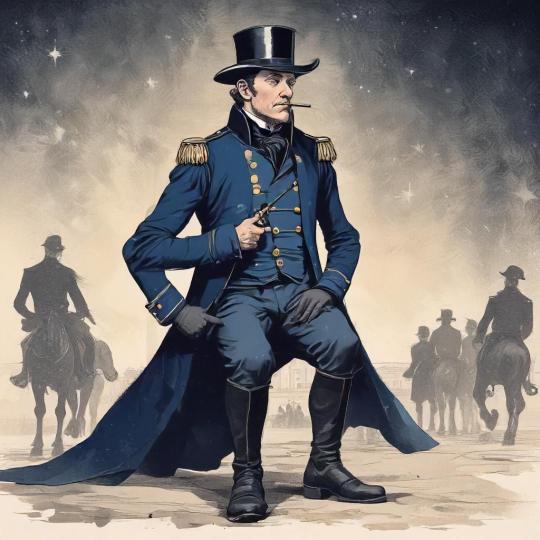
When you request things from an AI generator and it gives you wierd shit.
Like Javert with 3 legs/arms people with more fingers than they should have, arms coming out of a person's head or Jav sitting down on something invisible. It doesn't do this with every pic but i can get several of these in request results for one specific thing.
It is funny though
#les mis#les miserables#javert#inspector javert#valjean#cosette#ai generated images#weird ai generated images#ai generated images of javert#ai generated images of valjean
1 note
·
View note
Text


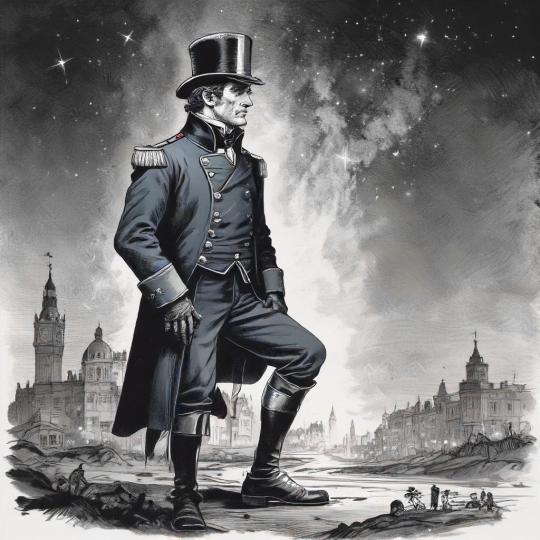
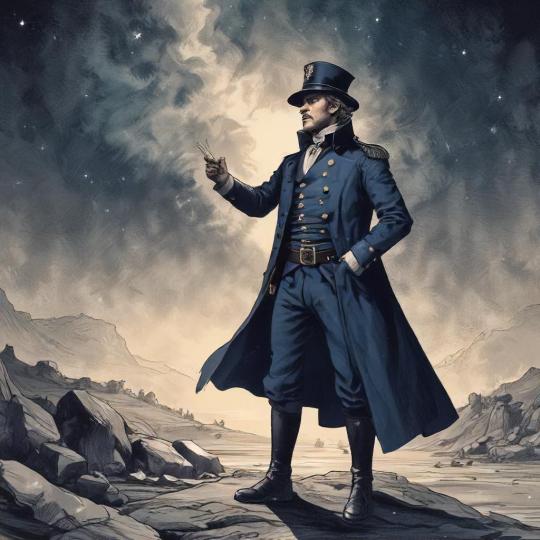


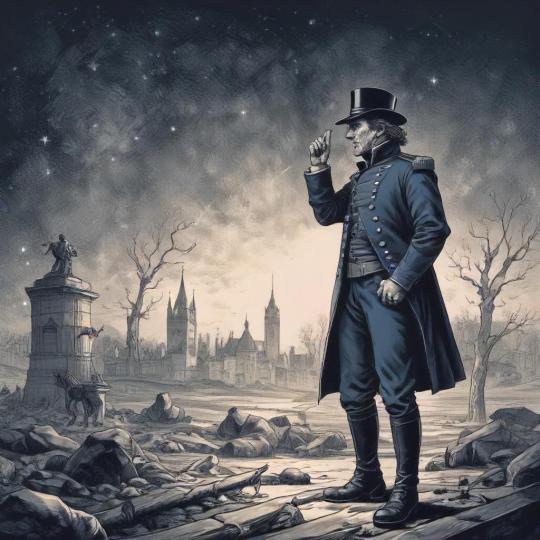
"Stars in your multitudes" - AI Jav edition
Some AI Generated Javert's looking up to the stars
#les mis#les miserables#javert#inspector javert#stars in your multitudes#stars ai jav edition#ai gerated javerts looking up to the stars#ai generated images#ai generated images of javert
0 notes
Text
Keeping up with stuff I said I was going to do
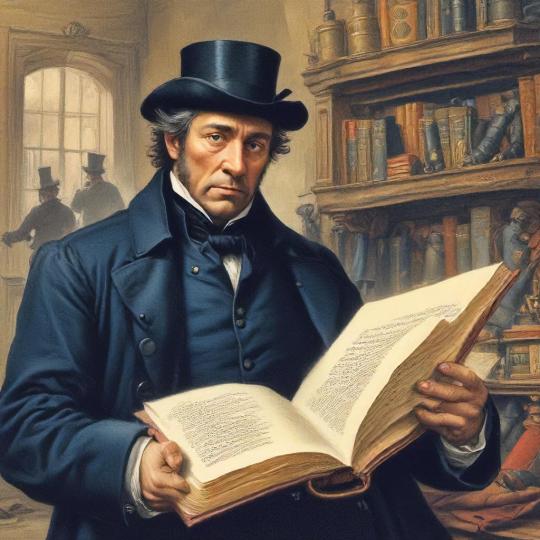
Coming soon :
Comparing the song 'Stars' to the text in The Brick. I just added this little project today and will do this before I do Javert's suicide, starting today.
Comparing the song 'Javert's Suicide' to the text in The Brick
Les Mis themed mental health awareness poster. Techinically for my other blog but I'll ost it on here too.
Finish reading The Brick, only a few hundred pages left to read now
Start writing Chapter 2 of my fanfic
Watch at least one of the old Les Mis films, that's if I can find any of them online.
After that who fucking knows but I have thought about writing a parody of 'Stars' just for the sheer fun and impish fuckery of it.
#coming soon#up & coming projects#'Stars' vs book text comparison#'Javert's Suicide' vs book text comparison#les mis themed mental health awareness poster#'Stars' parody#watch an old les mis movie#finish reading The Brick#write chapter 2 of my fanfic#les mis#les miserables#javert#javert themed projects#les mis themed projects
1 note
·
View note
Text
He who only read anything to make sure he wasn’t completely illiterate.

"when, in December, 1823, he read a newspaper, he who never read newspapers; but Javert, a monarchical man, had a desire to know the particulars of the triumphal entry of the “Prince Generalissimo” into Bayonne. Just as he was finishing the article, which interested him; a name, the name of Jean Valjean, attracted his attention at the bottom of a page. The paper announced that the convict Jean Valjean was dead, and published the fact in such formal terms that Javert did not doubt it. He confined himself to the remark, “That’s a good entry.” Then he threw aside the paper, and thought no more about it."
#les miserables#les mis#the brick#illustration#javert#inspector javert#javert reading even though he hates it#javert reading the newspaper#valjean’s death#jean valjean#a good entry he thought
33 notes
·
View notes
Text
He loved his work especially when he got results and arrested his perp. But Victor Hugo turned Javert’s love of his work (which was his entire reason for living) into some kind of fetish porn. A successful arrest of a criminal was how he got his rocks off. But Valjean was his greatest challenge so it was even more pleasurable for Javert to apprehend him.
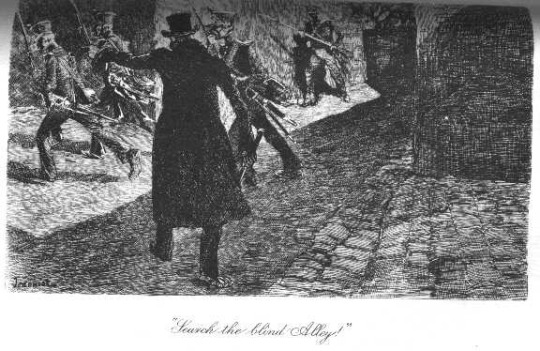
"Then he began the game. He experienced one ecstatic and infernal moment; he allowed his man to go on ahead, knowing that he had him safe, but desirous of postponing the moment of arrest as long as possible, happy at the thought that he was taken and yet at seeing him free, gloating over him with his gaze, with that voluptuousness of the spider which allows the fly to flutter, and of the cat which lets the mouse run. Claws and talons possess a monstrous sensuality,—the obscure movements of the creature imprisoned in their pincers. What a delight this strangling is!
Javert was enjoying himself. "
#les miserables#les mis#jean valjean#the wolf and the convict#the brick#illustration#javert#inspector javert#arresting criminals was his life and the only thing that gave him pleasure
34 notes
·
View notes
Text
Reblogging this even though it’s an old post it is quite informative and interesting.
The French Police Hierarchy and Javert’s Patron
After extensive Google-fu, I’ve compiled as much information as I can find on the French police prefecture during Les Miserablès and specifically, Javert’s mysterious patron, M. Chabouillet. If anyone cares to add to this post, please do; I can’t read a word of French, and aside from the almanacs, I haven’t dug into any original documents from that time period. Most of my conclusions regarding the police hierarchy are from papers written in the mid-to-late 1800s, which saw great changes in the Paris bureaucracy.
Tracking down Javert’s Patron
In the brick, Victor Hugo introduces a M. Chabouillet, Javert’s patron, who facilitates his career within the police force. When we first meet Javert in Montreuil-sur-mer, he writes (Vol. 1, Book 5, Ch. 5):
Javert owed the post which he occupied to the protection of M. Chabouillet, the secretary of the Minister of State, Comte Anglès, then prefect of police at Paris.
Later, after Valjean escapes to Paris, M. Chabouillet arranges for Javert to move to the capitol as well (Vol. 2, Book 5, Ch. 10):
Javert’s zeal and intelligence on that occasion had been remarked by M. Chabouillet, secretary of the Prefecture under Comte Anglès. M. Chabouillet, who had, moreover, already been Javert’s patron, had the inspector of M. sur M. attached to the police force of Paris.
With these two pieces of information, I started digging in the Paris almanac archives for any references to a Chabouillet [1]. As it turns out, there exist two men with the surname of Chabouillè, who served within the Prefecture of Police during this time.
The first is an Architectes inspecteurs divisionnaires in 1820 [1], which roughly translates to divisional inspector architect. I couldn’t find a description of this position around that decade, or any other position for that matter. The best document on the Prefecture’s administration is a letter from H.S. Sanford in 1854 [5], so I’ll refer to it for the rest of this post even though the bureaus and their responsibilities got shuffled around like musical chairs. On pg. 344, Sanford speaks of a “…commissary of the petite voirie, who has under him four architects of the first class, and six architects of the second class.” They are part of the active service in the 2nd bureau, 2nd division, with duties involving the inspection of buildings, quarries, and mines. I don’t see this man’s jurisdiction overlapping with Javert’s position handling criminal cases. Javert would not have written him regarding M. Madeleine, and I doubt he would have the power to send Javert to Montreuil-sur-mer or Paris.
However, the second Chabouillè is the head of the 1st bureau, 1st division in the Prefecture of Police. He holds this post over the years 1810 to 1831, which overlap with Comte Anglès’s term as well as Javert’s career as a policeman. (Some almanacs are missing, so he might have been there longer. He’s not listed in the position in 1808 or 1833). This bureau’s responsibilities also cover public order and security matters directly related to Javert’s investigations: “Pursuit of criminals and delinquents signalized or unknown, and against whom no writs have yet been issued… suicides and accidental deaths… carrying of forbidden arms… supervision of liberated prisoners, convicts, rèclusionnaires, and others…” [6, pg. 338]. As head of this bureau, Chabouillè ranks high up there in terms of power (see the section How Powerful was Chabouillè?), so it makes sense he would be Javert’s patron and have the authority to summon Javert to Paris.
Why then does Hugo call Chabouillet the secretary to Anglès? I believe he actually means that Chabouillet performed secretarial duties, not that his position was literally that of a secretary. There is no Chabouillè listed as secretary general or any form of secretary during Anglès’s term in the almanacs. However, Napoleon organized the bureaus as an administrative structure to aid the Prefect in carrying out his immense duties [2]. In 1809, when Vidocq entered the government, the 1st division was considered the Administrative Branch [12] since it had no active service component, and Chabouillè would have been tasked with much of the paperwork involved in policing Paris. (Later on, I think the 1st bureau, 1st division had a more direct hand in investigations). So it makes sense for Hugo to refer to him as secretary to the Prefect if we consider all bureau chiefs performed such duties.
Where did Chabouillè Live?
As a nice bonus, I discovered that the almanacs contain the residential addresses of many important people! For example, M. Gisquet, the Prefect in 1831, is listed as residing on Rue de Jerusalem, which is where all prefects lived during their term. I looked up Chabouillè, and his address in 1825 is the cul-de-sac S.-Claude-Montmartre, 2. In 1827, this changes to S.-Martin, 226, which lies in the aristocratic Marais district, where he remains through his departure as bureau chief in 1833. Interestingly, he is joined at this address by two Madame Chabouillè’s: one a libraire and one a papetier with a F. Guyot. Family members, perhaps?
You can search these addresses on the Les Miserables map to get a sense of where he lived relative to other characters in the brick.
How Powerful was Chabouillè?
The Police in Montreuil-sur-mer
To understand how much power Chabouillè wielded, we must first take a detour into the labyrinthine structure of the Prefecture of Police. France is divided into administrative regions called departments, which are sub-divided into arrondissements, cantons, and finally, communes. Each department has its own prefecture (except Paris, see below) governed by a prefect, who is a representative of the national government, and for those arrondissements that don’t contain the prefecture, a sub-prefect carries out the same administrative duties, reporting directly to the prefect. Police responsibilities are divided between the mayor and the prefect. The prefect is responsible for the general safety of the State and his department (police generale), while the mayor is in charge of public safety in his commune (police municipale) and the countryside (police rurale).
Montreuil-sur-mer is a single commune falling inside the jurisdiction of a sub-prefecture. As mayor, Valjean is the authority on municipal police matters, which is why he can overrule Javert in the Fantine case. However, once Javert suspects M. Madeleine is actually Valjean, he can elevate his concerns to the police generale level, since an ex-convict posing as a magistrate threatens the safety of the State! What I find interesting is that Javert sidesteps the proper route, which would be to go to the sub-prefect or even to the prefect of his arrondissement, and instead writes directly to Chabouillet. As head of the 1st bureau, 1st division in the Paris Police Prefecture, Chabouillet would hardly be involved in police matters of a small commune like Montreuil-sur-mer, which doesn’t even lie within his department.
Perhaps Javert was afraid that Valjean had already ingratiated himself with the prefect of the arrondissement? Working in the capitol, Chabouillet would be in a better position to maneuver politically if he wished to contest decisions of the local administrators and mayor. All prefects were ultimately responsible to the Minister of the Interior, who resided in Paris.
The Police in Paris
Paris is unusual in that it has no elected mayor: it is “…a single commune, divided into twelve arrondissements, each with its own mayor… The real rulers of the city were the Prefect of the Seine, who had his office at the Hôtel de Ville, and the Prefect of Police, whose headquarters was on rue Jerusalem and the quai des Orfèvres on the Île de la Cité.” [10]. The Prefect of Police not only held municipal police powers, but was also charged with maintaining the security of the State (preventing plots, espionage, etc) and the safety of the Department (public health, morality, etc) [9]. His reach extends across Paris and its three surrounding departments, the Petite Couronne. With so many duties, it is natural for the Prefect to delegate.
He has a second in command, the Secretary General, and two councils: the Council of the Prefecture dealt with litigation, while the General Council for the Department handled financial problems (and only convened once a year). However, the true day-to-day management happens in the bureaus, where we find Chabouillè. He is the head of the 1st bureau, one of three under the 1st division, which is governed by a superintendent. The superintendent would likely report to either the Secretary General or the Prefect of Police himself; I am uncertain what the hierarchy looked like in Hugo’s time, as my closest reference is a paper from 1954 [9]. Nevertheless, given how compartmentalized the Prefecture was, Chabouillè would be the expert on his segment of police work.
Where did Javert figure in the ranks compared to his patron? Well, some bureaus had sub-sections, each governed by an inspector general, but I don’t think this was the case for the 1st bureau, 1st division (at least it isn’t mentioned in Sanford’s letter). Beneath the inspector generals were the commissioners. Paris at the time was divided into 12 arrondissements, each further sub-divided into quartiers for a total of 48. A quartier was overseen by a commissaire de police, who “…superintends its cleanliness and lighting; takes cognizance of misdemeanors; makes the first examination of crimes and offenses… The commissaries are in constant communication with the people, and attend to the complaints they may have to make. Their residence is known at night by a square lantern of coloured glass hung at the door.” [6] In the mid-18th century, commissioners were generally well-educated men with legal training, who joined as a secretary/assistant and worked their way up. It was virtually impossible for a junior officer to be promoted to the position [11]. Thus, at best, Javert was one rank below the commissioner, serving as a chief inspector in a quartier. This is probably as high as someone of his background could climb in the career ladder… which makes it all the more interesting that he enjoys the patronage of a man like Chabouillet.
Miscellaneous
Prefect’s Uniform: “…this took the form of a blue coat embroidered with silver at the collar, at the cuffs and at the pockets, under which there was a white vest. The trousers were also white. A red scarf with silver fringes and a hat also embroidered in silver completed the outfit.” [2]
Prefect’s Salary: The salary of the Prefect of Police in Paris was 50,000 francs. For comparison, a principal inspector was paid 7,166 francs, and a rank-and-file inspector earned 1,500 francs [6, pgs. 154-155] [7].
Prefect’s Secretary: In addition to the Secretary General, which was a powerful political position in its own right, the Prefect of Police often employed a secretaire intime du Préfet, which literally translates to “intimate secretary of the Prefect.” Of all the almanacs I studied from 1807 to 1833, the only Prefect who had multiple individuals in this capacity was M. Gisquet: M. Nay was the secretaire intime, chef, and M. Nabon de Veaux was the sous-chef [1]. Take that as you will in your head-canons.
Office of the Sûreté: “At the time of Vidocq’s ingress to government service, 1809, the police force, or Prefecture, in Paris was comprised of two divisions: the First Division, or the Administrative Branch, and the Second Division, or Special Investigative Branch. The latter, managed by Monsieur Henry, was the unit to which Vidocq belonged; it concerned itself with the overall battling of crime.” [9]
Drownings and Accidental Deaths: “La Morgue, Marche Neuf - This is a place in which are deposited for three days the bodies of unknown persons who are drowned, or meet with accidental death. They are laid upon inclined slabs, open to the inspection of the public, in order that they may be recognized by those interested in their fate. Their clothes are hung up near them, as an additional means of recognition. If not claimed, they are buried at the public expense.” [6] This is where Javert’s body would have been taken. Since the 1st bureau, 1st division handles suicides and accidental deaths, it is likely Chabouillet learned of his protegé from a report on his desk…
References
[1] Almanach du commerce de Paris, archives (You can search some of the almanacs, but the function is quite poor and misses many matches. Your best bet is to download the pdf, check the index, and manually comb the relevant pages. For some reason, the Prefecture de Police pages are missing from the 1820 pdf in the archives, but you can find them on Google Books).
[2] Williams, Robert D. Napoleon’s Administrative Army - His Prefects. Member’s Bulletin: Napoleonic Society of America. Issue 72. (Summer/Fall 2002): pp. 15-20.
[3] Napoleon’s Law for Reorganizing the Administrative System (Febuary 17, 1800)
[4] Letters on France and England. The American Review of History and Politics, Vol. 3. (1812).
[5] H.S. Sanford’s Report on Administrative Changes in France since 1848
[6] Galignani’s New Paris Guide for 1859
[7] The Cabinet of the Prefect (September 1, 1862)
[8] Payne, Howard C. An Early Concept of the Modern Police State in 19th Century France. 43 J. Crim. L. Criminology & Police Sci. 377. (1952-1953)
[9] Chapman, Brian. The Prefecture of Police. 44 J. Crim. L. Criminology & Police Sci. 505. (1953-1954)
[10] Paris under Napoleon: The Administration of the City (Wiki)
[11] Commissaire de police in France (Wiki)
[12] Vidocq and the Office of the Surete
#les misereference#les mis discussion#les mis#les miserables#police prefecture#police inspector#Javert#inspector javert#chabouillet#Javert and his police patron#police#19th century french police
251 notes
·
View notes
Text
I’ve recently done a bit of reading up on the real dude that Javert’s character was based on and while it’s probably fair to say he wasn’t wealthy by any means, certainly not aristo wealthy he wasn’t a poor dude all his life either and he earned a good living. Also I think it’s very safe to say that Javert on whatever money he earned was probably very thrifty with his dosh and Likely over the years managed to save money up. He pretty much lived in his police uniform most of the time, he was self sufficient in many ways so didn’t have much in the way or help at home and given his personality probably didn’t allow other people into the privacy of his home/life unless he absolutely had to.
While Javert is by no means living an identical life to the man his character was based on I suspect there were a few similarities that went unmentioned somewhere in the duration of his career especially when it came to his earnings. But just because Javert had shitty beginnings doesn’t mean his entire life/career was poor.
Also he was ashamed of his Romani heritage so he likely kept that to himself as much as he possibly could.
Javert is NOT a rich white cop, he's a poor Romani man born inside a jail. When I first joined the Les Mis fandom about a decade ago I remember there were a lot of people who made Javert a rich white policeman. Which, hey, I do kinda get it, especially when you're contrasting Javert to characters like Valjean or Les Amis. I totally get why people would want that story to exist within Les Mis fanworks. But also, that is not Javert whatsoever. He's canonically half Romani, born in a prison.
Javert being a class traitor actually means so much more to the story than Javert being some random privileged asshole pig.
#les mierables#les mis#javert#inspector javert#Javert’s lifestyle#Javert’s earnings#eugene francois vidocq#just my thoughts
304 notes
·
View notes
Photo
Philip Quast on Playschool 😍😍😍




91 notes
·
View notes